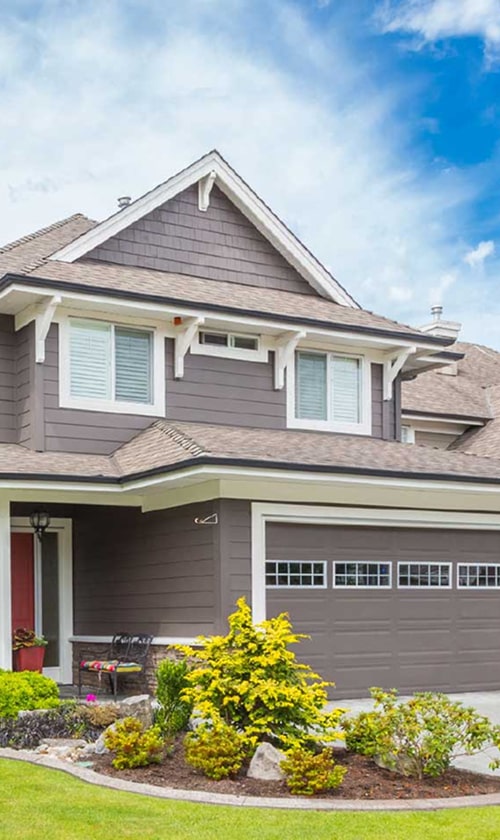Understanding Heat Pump Technology

In exploring heat pump technology, we focus on their fundamental operation, different types and the major components that allow them to effectively heat our homes even in cold climates.
Heat Pump Basics
A heat pump is a versatile device used for both heating and cooling spaces. Unlike conventional heating technologies that generate heat through combustion or electric resistance, heat pumps transfer heat from one place to another. This method can be far more energy-efficient because it requires less electrical energy to move heat than to generate it. At the core of a heat pump’s performance is the compressor, which modulates the refrigerant flow and pressure, impacting the overall efficiency and capability of the system. Notably, many modern heat pumps include a variable-speed compressor, which adjusts its speed to maintain consistent indoor temperatures and enhance efficiency.
Types of Heat Pumps
Heat pumps come in various forms, each suited for specific climate conditions and installation configurations:
- Air-source heat pumps (ASHPs): These are the most common and extract heat from outdoor air. They are known for their versatility and can be used in a wide range of climates, including those with mild to moderately cold winters.
- Ground-source or geothermal heat pumps (GSHPs): These systems utilize the relatively constant temperature of the earth or water sources to heat and cool buildings, providing exceptional efficiency even in extreme climates.
- Absorption heat pumps: Powered by natural gas, solar energy, or geothermally heated water rather than electricity, these are less common and are often used in large or industrial applications.
Each type offers distinct advantages and requires consideration of local climate, soil conditions, and energy costs.
Components of a Heat Pump
A heat pump’s major components include:
- Evaporator coil: Where the refrigerant absorbs heat from the air or ground source.
- Compressor: The heart of the system, it raises the refrigerant temperature and pressure.
- Condenser coil: The refrigerant releases the absorbed heat to the indoor air or water distribution system.
- Expansion valve: This component regulates the refrigerant flow into the evaporator.
These components work in a cycle that reverses depending on heating or cooling needs. A backup heating system, often consisting of electric resistance heat, may be activated when the heat pump alone cannot meet the heating demand due to extremely low temperatures. Ensuring that these components function optimally is vital for sustained performance in cold climates.
Heat Pumps Performance in Cold Climates

Heat pumps are traditionally less effective in cold climates, where temperatures frequently drop below freezing; however, advancements are being made. We will explore both the challenges they face and the innovative solutions developed to overcome them.
Challenges in Cold Climates
In colder regions, air-source heat pumps (ASHPs) traditionally face reduced heating capacity and efficiency. Sub-zero temperatures can lead to a drop in the coefficient of performance (COP), which makes these systems work harder to extract heat from the outside air. When the outside temperature plunges, the heating capacity of standard ASHPs can fall, sometimes necessitating supplemental heating sources to maintain interior comfort.
- Frost accumulation on the outdoor heat exchanger coils can further impede performance. This triggers defrost cycles, which use energy and temporarily switch the heat pump to cooling mode to melt the ice, an action which temporarily reduces heating capacity.
- Extended periods of cold weather can mean that ASHPs operate almost continuously, leading to increased wear and potential failures.
Cold Climate Heat Pump Innovations
Manufacturers have developed specific Cold Climate Heat Pumps (CCHPs) designed to cope with cold environments, maintaining performance even when temperatures drop as low as -25°C (-13°F).
Air-source heat pump innovations for cold climates often include:
- Enhanced vapor injection compressors which provide better performance at low ambient temperatures.
- Variable speed compressors that adjust the operation based on conditions to optimize efficiency.
- Improved coil designs to maintain heat exchange efficiency even in freezing weather.
- Advanced defrost strategies, such as demand defrost control, which minimize the energy penalty during defrost cycles.
We have compiled a simple comparison to showcase the differences between standard ASHPs and those designed for cold climates:
| Feature | Standard ASHPs | Cold Climate HPs |
|---|---|---|
| Operational Range (Temperature) | 0°C to 20°C | -25°C to 20°C |
| Heating Capacity | Decreases below 0°C | Maintains at low temperatures |
| Defrost Method | Less efficient, frequent | Efficient, less frequent |
| Compressor Technology | Fixed speed | Variable speed |
CCHPs represent a significant leap forward in technology that allows us to maintain comfort without compromising on efficiency or performance in a cold climate. With these advancements, heat pumps are becoming a more viable option for heating in diverse climates.
Operational Efficiency and Energy Use

Heat pumps are a significant advancement in achieving high energy efficiency in cold climates, offering notable reductions in electricity use and utility bills compared to traditional heating systems.
Improving Energy Efficiency
To maximize the energy efficiency of heat pumps in cold climates, we prioritize system design considerations, including sizing and installation. Properly sizing a heat pump for a given space prevents both energy waste and undue strain on the system. Installation also plays a critical role; incorrect placement or ductwork can hamper performance, leading to increased energy use.
To aid in improving energy efficiency, here are some specific strategies:
- Insulation: Enhancing building insulation reduces heat loss.
- Thermostat settings: Optimizing thermostat settings for different times of the day can prevent unnecessary operation.
- Regular maintenance: Ensuring the heat pump is serviced regularly can maintain its efficiency.
- Advanced features: Some heat pumps come with features that improve performance in low temperatures, such as demand-defrost control.
Heat Pumps vs. Traditional Heating Systems
Comparing heat pumps to traditional heating systems, such as electric furnaces, gas furnaces, and systems powered by propane, natural gas, or oil, we observe several benefits in terms of energy use and efficiency.
| Heating System | Energy Efficiency | Greenhouse Gas Emissions | Energy Costs |
|---|---|---|---|
| Heat Pumps | High | Lower | Less |
| Electric Furnaces | Moderate | Higher | More |
| Gas Furnaces | Low to Moderate | Higher | Variable |
| Systems using Fossil Fuels | Low to Moderate | Highest | Variable |
Using electricity as their primary energy source, heat pumps are more energy-efficient, particularly when sourcing electricity from renewable energy. This leads to lower greenhouse gas emissions. Moreover, heat pumps often result in lower utility bills due to their efficient operation, despite the higher initial investment. Fossil fuel-dependent systems, while potentially cheaper to install, generally incur higher energy costs and leave a larger carbon footprint.
Maximizing Comfort and Utility Savings

To achieve maximum comfort and utility savings with heat pumps in cold climates, it’s essential to consider both proper insulation integration and perform a detailed cost-benefit analysis. These strategies ensure efficient heat pump operation and lead to significant energy and cost savings.
Integrating Insulation and Heat Pumps
Proper insulation is a crucial companion to any heat pump system. We see that it’s essential to properly seal and insulate the home to maintain the desired temperature efficiently. Here’s a breakdown of key steps:
- Evaluate insulation levels: R-value measures insulation’s resistance to heat flow. Higher R-values means better insulation performance, which can minimize heat loss.
- Identify and seal air leaks: Use caulk or weather stripping to seal leaks around windows, doors, and electrical outlets.
- Choose the right type of insulation: Options range from fiberglass to foam board or spray foam. Each type varies in effectiveness in different parts of the house.
By addressing these, heat pumps don’t have to work as hard, which can reduce the wear and tear on the system and extend its lifespan.
Cost-Benefit Analysis
When assessing the financial aspect, it’s advantageous to do a thorough cost-benefit analysis.
Short-term vs. Long-term costs: The initial investment in a high-quality heat pump and supplemental insulation may be high. However, the long-term utility bill reductions can be substantial.
Rebates and Tax Credits: Research local incentives, like rebates and tax credits, that often offset the costs of energy-efficient upgrades.
Energy Savings: Use the Seasonal Performance Factor (SPF) to estimate annual energy consumption. Compare this with your current energy use to project savings.
To summarize, integrating proper insulation with a heat pump and conducting a comprehensive cost-benefit analysis can lead to noticeable improvements in home comfort and utility savings.
Adoption and Environmental Impact
The transition to heat pumps, especially in cold climates, is a critical step in reducing carbon emissions and fostering a net-zero carbon economy. We understand the importance of adopting these systems and the positive environmental impact they bring.
Incentives and Building Policies
State and federal incentives are pivotal in encouraging both residential and commercial adoption of heat pumps. For example:
- The U.S. Department of Energy (DOE) supports adoption through the Building Technologies Office, providing funding for innovations in heat pump technology.
- Efficiency Maine offers rebates for high-efficiency heat pumps to Maine residents, promoting wider installation.
- The Northeast Energy Efficiency Partnerships coordinates policies and programs across states to increase the adoption rate.
We also witness progressive building policies that integrate heat pumps as standard practice for new constructions, aiming to align with our environmental goals.
Towards a Net-Zero Carbon Economy
The integration of heat pumps into our utilities infrastructure is a significant stride towards a net-zero carbon economy. We see a substantial reduction in carbon emissions with the gradual replacement of fossil fuel-based heating systems:
- Companies like Lennox International and Daikin have been key stakeholders in advancing heat pump technologies that perform efficiently even in the coldest climates.
- Regulatory agencies, such as the U.S. Environmental Protection Agency and Natural Resources Canada, endorse the deployment of environmentally friendly heat pumps as a strategy to combat climate change.
We recognize that sustainable practices are essential for our future, and the move towards heat pumps is a clear indication of our commitment to reduce the environmental impact of our heating needs.




